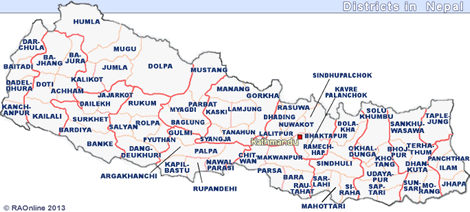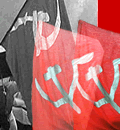|
Rolpa:
Report from the Gam battlefield
|
 |

Nepal
Army
|
For
the first time, reporters and a Western defense attache were allowed into
the war zone where the goverment armed forces fought its deadliest battle
in the six-year insurgency that has killed more than 4,300 people in Nepal.
The
Defense Ministry said in a statement that 81 soldiers and AFP police officers
and 275 rebels had been killed in a week-long of fighting that ended last
week in Gam, a deserted mountainside village in mid-western Rolpa district
300 kilometers west of Kathmandu.The attack left several security
personnel injured.
According
to reports from survivors, there were burned huts, scattered helmets, shoes
and bullets where soldiers and police had been overwhelmed by waves of
rebels in this bloody guerrilla attack. The rebels beat drums, screamed
taunts and exploded crude bombs as they advanced. In night raids,
the survivors reported, what seemed like thousands of Maoist rebels
advanced with torches to give the appearance of added strength. The RNA
commander at Gam showed a couple of selected journalists some string,
saying it had been used to tie the hands and feet of one of his senior
officers, who was slashed repeatedly in the neck, and shot in the head.
"We had two choices, either to reciprocate or withdraw," the army commander
said.
The
reports said that a 62 soldiers had already gone for patrolling the nearby
village. None of them had even the faintest imagination that the Maoists
would make a comeback that night. But they came in hundreds and thousands
holding grenades and sophisticated guns and fired at them. "We were
sleeping peacefully. The rebels set fire to our camp. After that we heard
gun shots but we could not tell where it came from nor who was firing,"
an army soldier said. Our Major was instructing each one of us to
take positions when there was an explosion nearby that awoke all the security
personnel from their deep slumber. By then the exchange of fire had already
begun and the fire set by Maoists had already ripped through the sentry.
The officials inside the sentry crawled into the bunkers to take out their
guns. Maoists were already advancing and were closing in centimeter-by-centimeter.
Bullets from modern guns began to be fired from either sides. We remained
hopeful until the dying hours that additional forces were coming to assist
us. But no additional forces were deployed. We were in a very small number
and proved matchless against thousands of Maoists, most carrying grenades
and armed to the teeth. They were Terai-based people, Tharus and Khar Magars.
These people put before them mostly untrained commoners, who held grenades
and hand-bombs as they advanced forward.The Maoist rebels came in three
groups. At first, there were those who hurled grenades and at their back,
there were those who held guns in their hands. Maoists were well armed
but not well trained. After those gunmen, there were those who were trained
in carrying the dead and the wounded.
Among them were also groups of medics,"
a survivor continued. "We saw the rebels throwing their wounded comrades
into the raging fire. The Maoists were burying alive their comrades as
they fled the spot. We saw them burying at least 250 of them. The firing
went on for about four and half hours. By then 8-10 of us were still alive.
Due to bad weather, wounded security men and our Major were captured and
killed. We could no longer defend them. After the daybreak, a helicopter
hovered above our head but it could not land until late noon. The Maoists
had already destroyed the possible landing grounds and were still guarding
over the entire area where the incident occurred. Some military reinforcements
arrived by the helicopter, when it finally landed hours later.
Our
Major had warned us in advance that the Maoists were attacking us."
Meanwhile,
Royal Nepal Army is all set to vacant the base in Gam. The army is withdrawing
in a tactical retreat from two of its five positions in the western
Maoist rebel stronghold in Rolpa district and reinforcing its largest garrison
for an expected attack.
top
|






